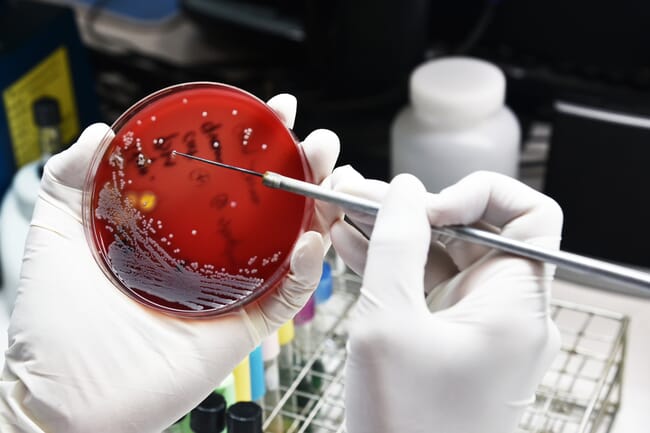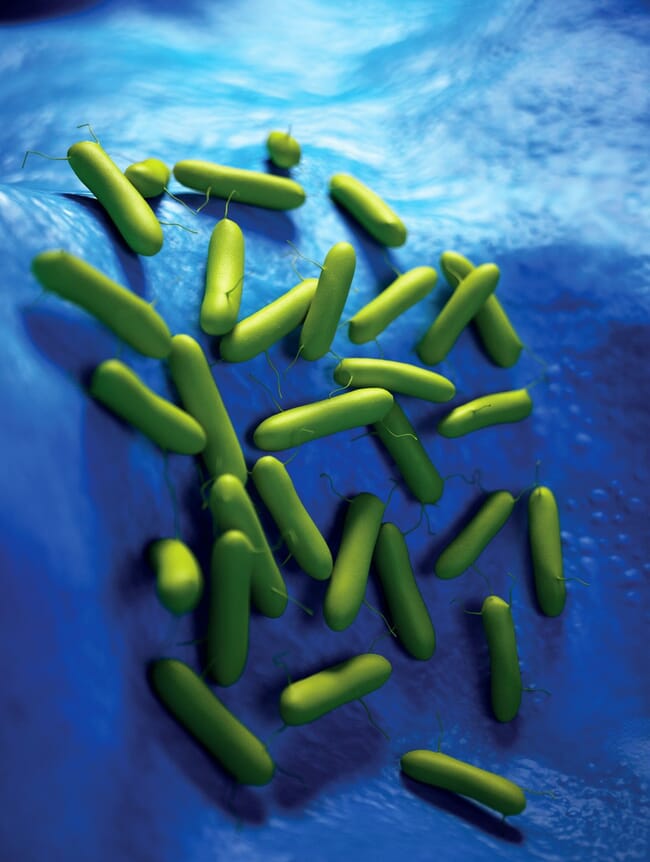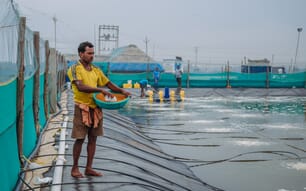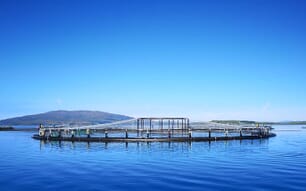A recent review in the journal Antibiotics has outlined the potential treatment and preventative potential of bacteriophages in aquaculture, arguing that phages could be successfully replace antibiotic treatments if the appropriate safety and regulatory challenges are met.
In the review, the researchers explore the benefits and constraints of bacteriophage therapy, identifying the potential treatment opportunities and the practical challenges producers could face when adopting them.
The trouble with antibiotics
Despite growing demand and production of farmed fish, the sector’s resilience shouldn’t be taken for granted. Aquaculture faces significant challenges from disease, especially bacterial infections. These pathogens cause huge economic losses each year and negatively impact fish welfare.

Though antibiotics can treat most bacterial infections in farmed fish, there are noted drawbacks to their use. Antibiotics target all bacterial cells in their environment. This means that pathogenic and beneficial bacteria will both be destroyed, leading to environmental and biological drawbacks. Antimicrobial resistance (AMR) is another concern. The transfer of resistance genes between bacteria has been well documented and is becoming a more pressing issue in both animal and human health. Because of these trends, researchers are exploring alternatives to antibiotic therapy.
What are bacteriophages?
Bacteriophages are viruses that infect bacteria. Researchers have been aware of their therapeutic potential for decades, but they haven’t been widely deployed because antibiotics have been readily available and cost-effective. However, since bacterial pathogens are becoming more resistant to antibiotics and countries are restricting their use in agriculture and aquaculture, researchers are exploring phages as treatments for bacterial diseases.
Biologists categorise phages as either virulent or temperate. When virulent phages infect bacteria, the cell walls are broken down the host is destroyed. This process limits the possibility of gene transfer, making virulent phages ideal treatment options for bacterial disease.
Conversely, temperate phages don’t immediately destroy the host cell. Instead, the phages insert their own genome into the bacterial cell, making it produce multiple copies of the phage genome before breaking down. This type of infection is associated with horizontal gene transfer – meaning that these phages shouldn’t be used to treat bacterial disease.

Since bacteriophages are targeted to infect specific bacteria, researchers have suggested creating “phage cocktails”, where various phages are mixed and deployed to treat disease challenges. This will allow producers to get the most benefit from the treatment.
The case for phage therapy
Though bacteriophage therapy for aquaculture is still in the exploratory phase, it has huge potential. Ecologically speaking, bacteriophages are abundant in nature. It’s relatively easy for researchers to isolate virulent phages as potential therapies. Phages are also cheaper to develop than antibiotics.
From a biological perspective, as phages act directly on target bacteria, they can neutralise pathogens without harming beneficial bacteria or causing side effects. Since many phage species are self-replicating and self-limiting (especially if they’re virulent), they don’t carry the same risks as other therapies. The researchers also note that phages don’t leave environmental toxins or residues after they have been administered.
Experimental data indicates that bacteriophages can be more effective than antibiotics at treating and preventing infectious diseases. Trial data also show that phages can successfully treat multi-drug-resistant strains of bacteria. They have also been able to clear biofilms. The researchers suggest that bacteriophages can be used as biocontrol agents – ensuring that the aquaculture environment remains pathogen-free during production.
Some reason for caution
Despite the potential, there are some noted drawbacks with bacteriophages. Biologically speaking, the narrow host range of bacteriophages can be a double-edged sword. This is especially true if producers need to treat multiple or genetically unrelated strains of bacteria. Mutation is an additional concern for both phages and the bacteria they target. The researchers note that some bacteria can become phage-resistant and phages can play a role in horizontal gene transfer. Like antibiotics, researchers will have to constantly monitor the use of bacteriophages to stay ahead of the mutations.
From a practical perspective, researchers still need to shore up phage resilience and identify the best way to administer them. Currently, it’s difficult for bacteriophages to reach target bacteria before being cleared by the host’s immune system or other environmental conditions. The effectiveness of phages will also depend on production factors. Since bacteriophages are protein-based, conditions like water temperature, pH, water salinity and production density can impact their effectiveness. Researchers will need to develop ways to encapsulate bacteriophages and develop phage cocktails that can be used in real-world conditions.

© BioMar
The future of the sector
Regulations and legislation remain one of the biggest obstacles for bacteriophage use. As of publication in 2020, there aren’t any dedicated phage therapies approved for the EU's aquaculture sector, for example. The existing regulatory framework in the EU isn’t conducive for developing phage therapies. In the EU, phages must be registered individually – making the development burden for phage cocktails needlessly difficult.
However, the safety concerns shouldn’t be immediately discounted. The researchers stress that limited evidence of risk isn’t the same as no risk. Regulators need to balance those concerns to make sure aquaculture can safely contend with bacterial and AMR challenges.
Another consideration for the aquaculture sector is whether bacteriophages will be used as a treatment for bacterial infections or as part of routine prophylaxis. The research on both strategies is mixed, with some trials indicating that using phages as preventative treatments is more beneficial and others suggesting the opposite.
The researchers note that scientists are trying to identify phages that fit into “goldilocks” conditions. The fish farming sector needs bacteriophages that are strictly virulent, can be easily produced, easily stored, aren’t able to perform gene transfer and that are free from any virulence genes – it will be difficult to achieve all of those targets simultaneously.
For the time being, the key challenge is striking the right balance between the desired and unwanted aspects of each bacteriophage. Future research needs to focus on performance during in vivo trials, eliminating negative side-effects and shoring up the products’ safety.




